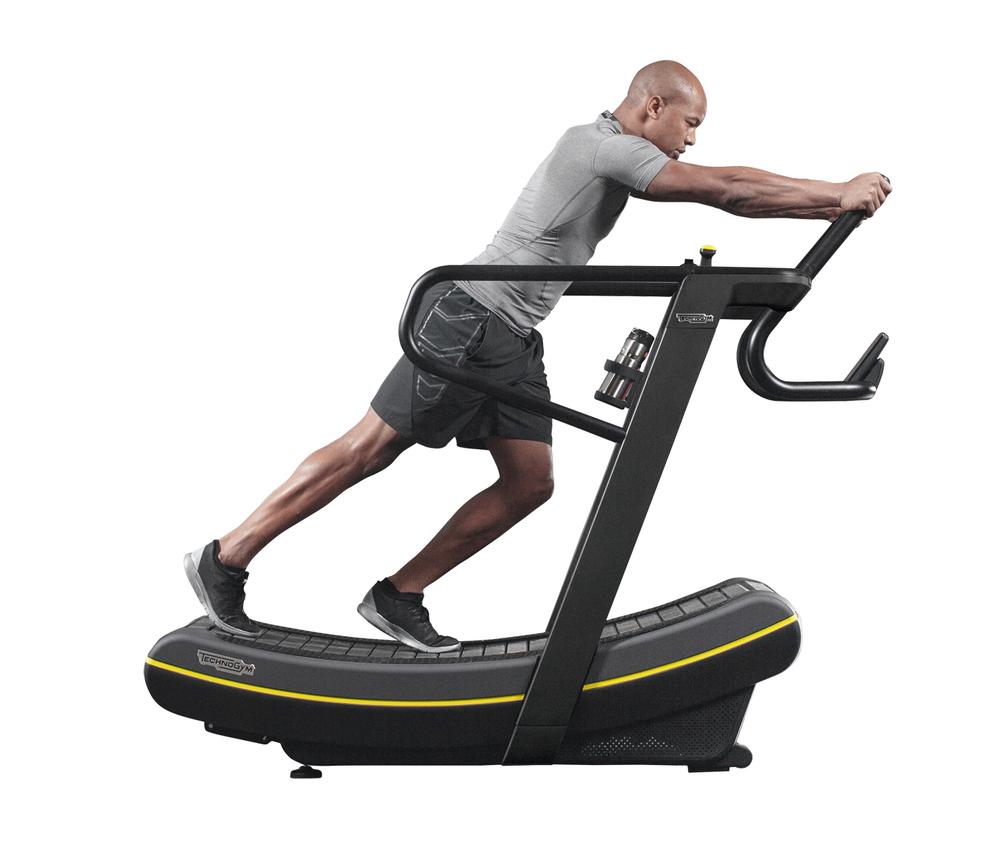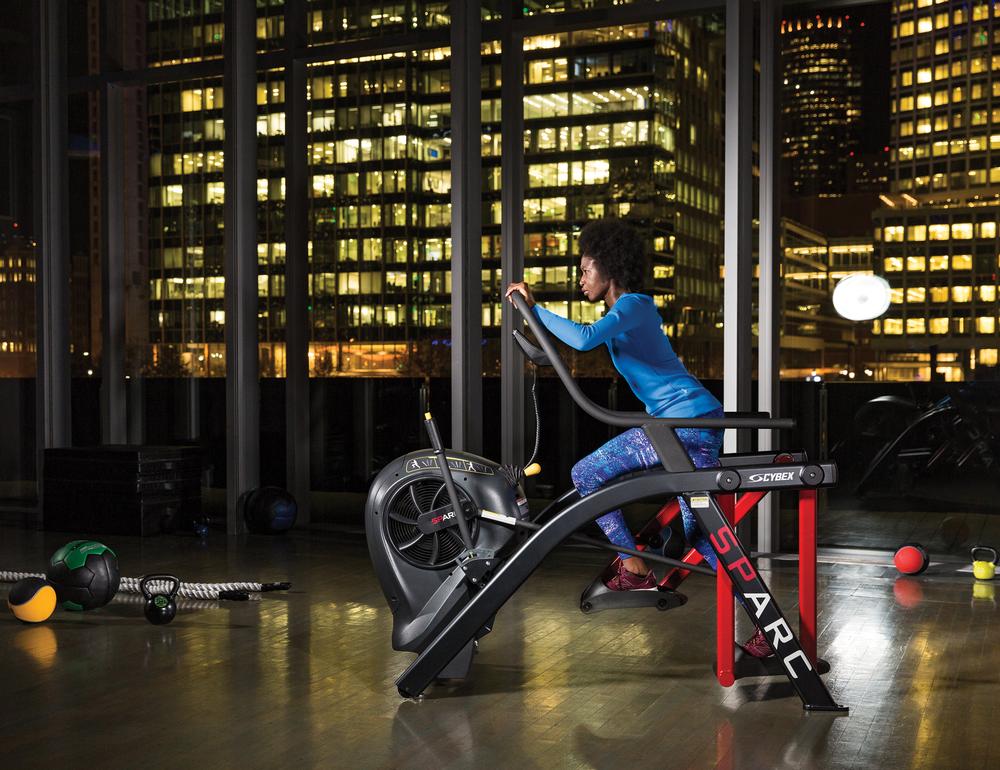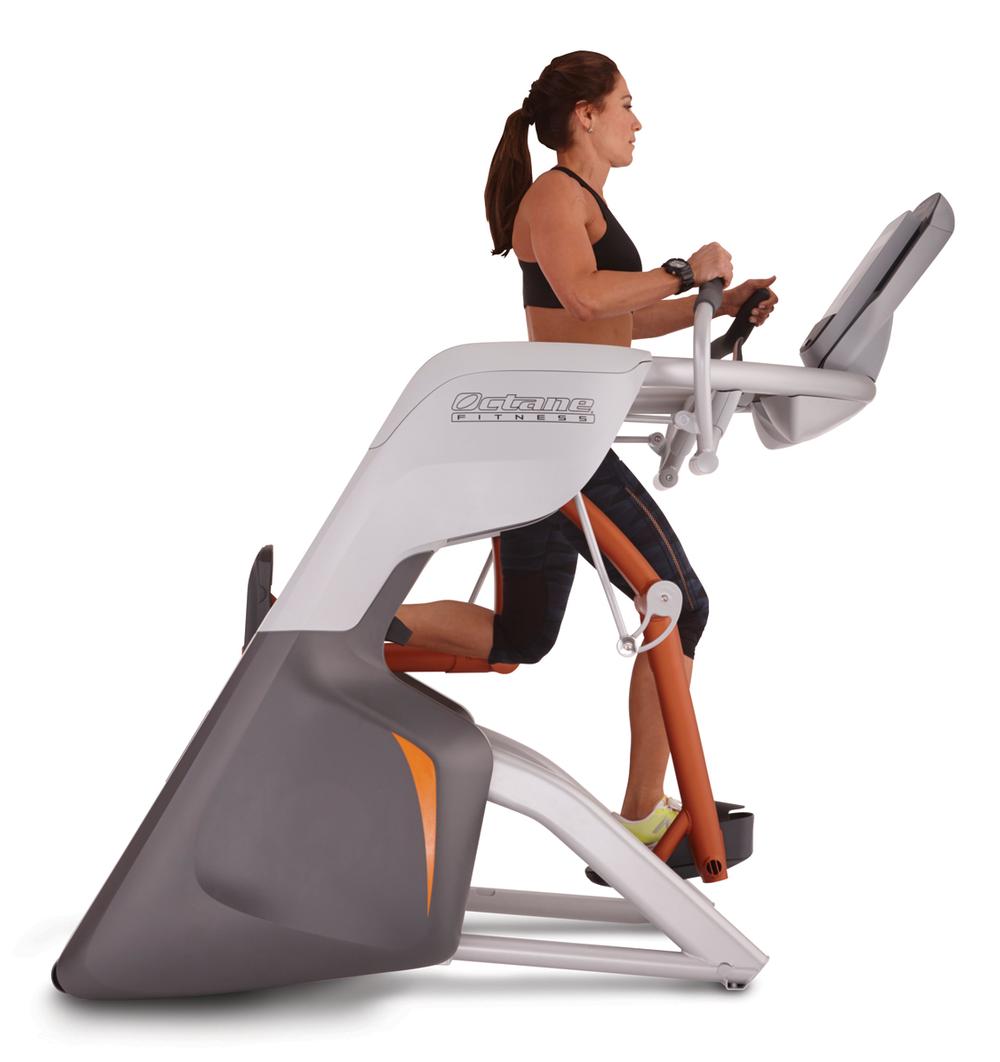Self-powered bikes, steppers and ellipticals have been around for a long time, but it’s the advent of self-powered treadmills that’s really exciting,” says Roger Eldergill, UK country manager for SportsArt, which offers a full range of self-powered cardiovascular equipment, giving health clubs the ability to sell energy back to the grid. And with Technogym and Matrix now launching self-powered treadmills – joining the likes of Woodway and SportsArt – it seems this is no passing fad.
Sports performance
It’s not just a desire to be environmentally friendly that’s powering this trend either: Technogym and Matrix are both coming from a sports performance angle, which is reflected in the marketing of their new products.
Allowing users to work on four different aspects at once – power, speed, stamina and agility training – Technogym is positioning its new Skillmill treadmill as ideal equipment for performance and functional areas, with programmes available for download through the mywellness app or by scanning QR codes.
The Skillmill has been rigorously tested at Italy’s University of Padova, and has been shown to bring about a significantly higher activation of the posterior chain – in particular glutes and hamstrings – compared to traditional treadmills. Indeed, by increasing the resistance and assuming a sled-pushing position, the level of activation is as high as glute-targeted exercises such as kneeling squats, deadlifts and sumo deadlifts.
Bannatyne will be one of the first national chains in the UK to launch Skillmill in 2016; personal training studios and the boutique sector have also shown interest.
Meanwhile Matrix Fitness launched the S-Drive Performance Trainer at IHRSA 2016. Designed to deliver the functionality that’s found in self-powered treadmills, weighted sleds, resistance parachutes and harness systems in one piece of equipment, the S-Drive offers intense sprinting and sled-pushing workouts.
S-Drive features include a parachute brake with 11 resistance levels to simulate outdoor parachute resistance. A seven-degree fixed incline helps build strength and explosiveness in sprinters without changing the athlete’s natural gait, while a dedicated sled bar combined with a sled brake offering eight resistance settings mimics pushing 270lbs on natural turf.
“We worked with some of the world’s most demanding coaches and athletes to understand their needs,” says Mark Zabel, VP of global marketing for Johnson Health Tech.
Octane Fitness has also latched on to the sports performance angle with its brand new Zero Runner self-powered zero-impact running machine.
The Zero Runner allows for up to a 58-inch stride length and, by reducing the repetitive impact, allows users to optimise their form, engage the core and concentrate on activating the hamstrings and glutes. A ‘live stride tracing’ stride analysis functionality also helps users perfect their stride and become a more efficient runner.
HIIT appeal
But ‘sports performance’ doesn’t need to mean ‘elite’, as Craig Swyer, digital and product marketing manager at Technogym, explains: “Whereas HIIT used to only be seen at specialised performance gyms, it’s now becoming a regular addition at mainstream facilities – and the ‘get on and go’ capability of self-powered treadmills makes them a perfect fit for HIIT programmes and group circuit classes.”
Rob Thurston, commercial director for Cybex UK – which offers a range of self-powered equipment – believes there are other trends driving the growth in this area too. He says: “As well as HIIT and circuit training increasing in popularity, floor space remains at a premium in almost all gyms. Self-powered equipment allows the flexibility to move equipment easily and position it almost anywhere on the floor, without the need for power.”
Sustainable solutions
And then there’s the sustainability angle. Thurston says: “As ever, facilities are striving for cost-effective solutions, and self-powered equipment offers a suitable ‘green’ alternative that often requires minimal maintenance in comparison to traditional cardio equipment.”
Jez Whitling, MD of Intenza – which offers self-powered upright bikes, recumbents and cross-trainers – agrees that the green angle is important, as both health clubs and their members want to become more socially responsible. This in addition to the impact on the bottom line, whereby clubs save on energy costs by installing self-powered equipment.
1Life has installed Intenza cardio equipment at two of its sites. Managing director Neil King explains how this decision is in accordance with the operator’s environmental strategy: “This equipment provides energy cost savings and flexibility regarding future designs of the fitness space, as well as simplifying an often costly installation process, which can involve significant cabling and power requirements.”
Mainstream or niche?
Eldergill also believes sustainability is the main driver behind the interest in self-powered equipment, but he questions whether the trend will ever become truly mainstream unless a club’s business model is based on sustainability and a pared-back approach to technology.
“It would be a brave organisation to go down the solely self-powered route,” he says. “With all of our clients who run clubs aimed at a younger demographic, especially universities, we’re seeing a demand for integrated screens on treadmills, so users can go on the internet and social media while they work out.”
Intenza has made inroads into addressing this issue: its E Series range of equipment requires power for the integrated TV screens, but features an eco-light on the console that lights up when the user is exercising at a level where they’re generating enough power from their exercise to power the whole machine and the TV screen. This not only saves money for the operator, but also provides a challenge to the exerciser – and a feelgood factor when the light comes on.
And while the mass market’s desire to access the internet during their workouts might suggest the appeal of self-powered equipment is likely to be finite, the new focus on sports performance offers an interesting angle to push.
To this end, self-powered trailblazer Woodway – whose research shows that just walking on its treadmill can burn 30 per cent more calories than walking on traditional treadmills – is now working with clubs and master planners to develop programmes for small group circuit classes.
This is an area of product innovation that’s reaching a peak; if manufacturers can position the products correctly, taking them beyond niches, growth will likely continue for some while yet.
























































